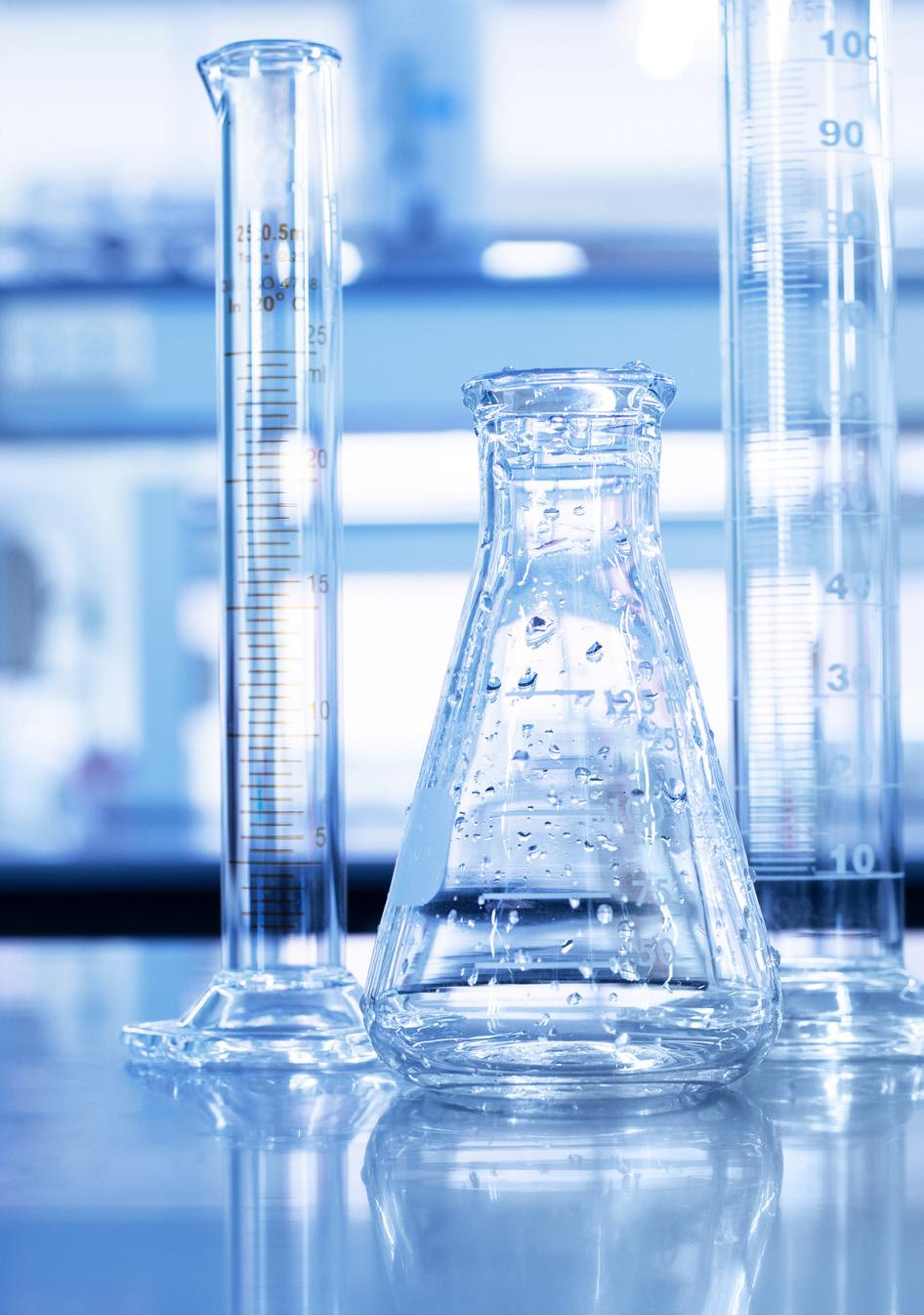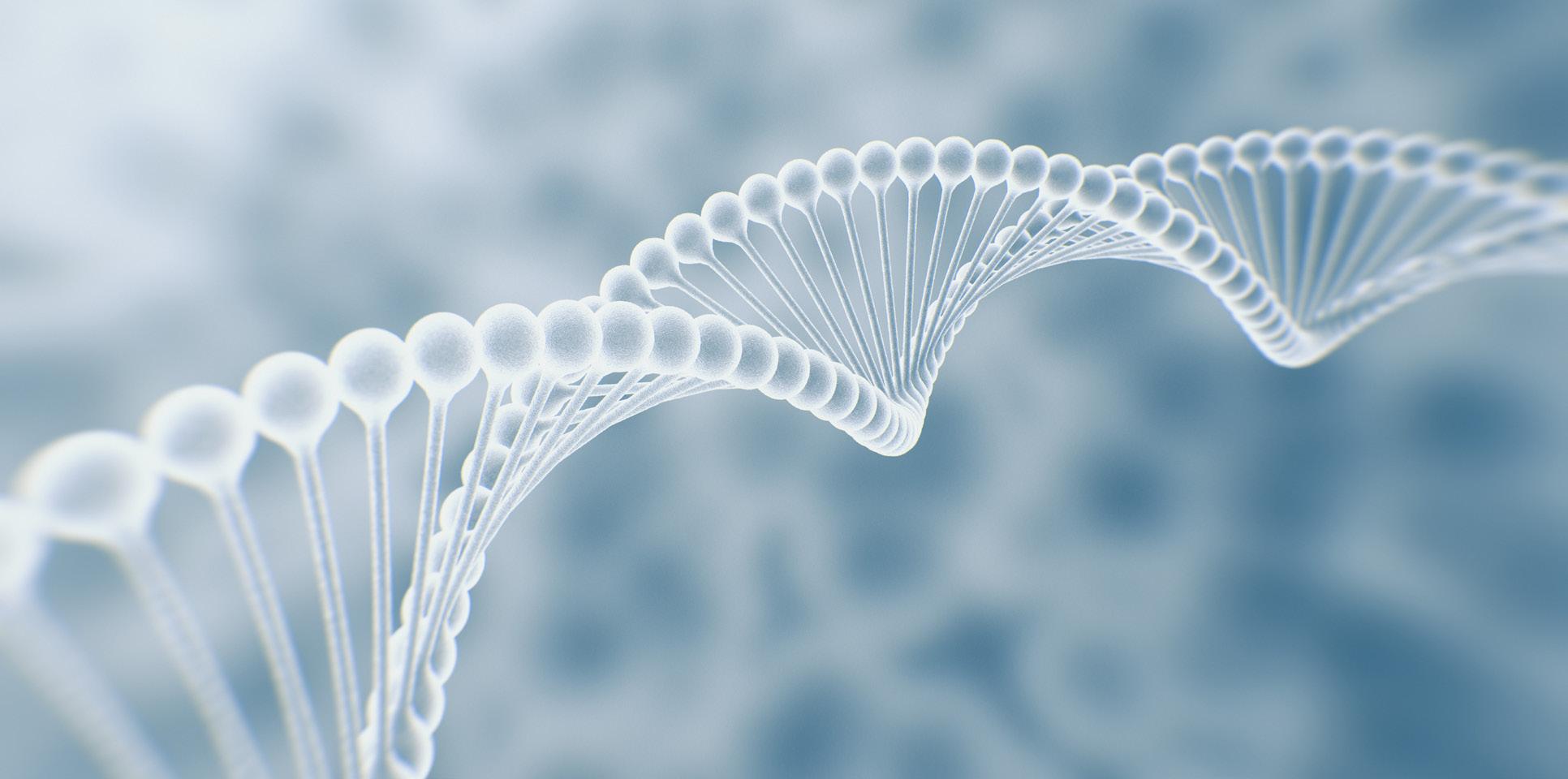
5 minute read
Pharmacogenetics in service of Longevity
Dr. Goranka Tanackovic, PhD CEO Gene Predictis
According to a recent study, medicines are responsible for more than a third of the improvement in life expectancy observed from 1990 to 2015; this makes them an extremely important contribution factor for longevity. However, increased use of medicine also brought to evidence an increased number of adverse drug reactions. According to US Food and Drug Administration, adverse drug reactions are 4th leading cause of death in developed countries - ahead of pulmonary disease, diabetes, AIDS, pneumonia, and automobile accidents. Almost one third of hospital admissions in Europe result from adverse events caused by drugs. Thus, an important challenge is determining which drug and which dosage of the drug correspond to an individual needs.

Already in 1950s it became obvious that different individuals respond to drugs in a different way and that this response is in a large part determined by genetics. This led to birth of Pharmacogenetics in 1959, a discipline that studies the role of the genetic variants in drug response. In our body, drug metabolism (the absorption, distribution, activation and elimination of drugs) is mediated by enzymes and transporter proteins that are encoded by our genes. Diverse common genetic variations present in those genes yield enzymes and transporters of diverse efficacy. As a consequence, one person might respond well to a drug, the other one not at all, while the third one will mostly suffer adverse effects and needs rather a substitute medication.
The important technological and scientific developments over the last decades, notably sequencing of the human genome and all subsequent large-scale studies allowed by this accomplishment, pawed the way to personalized and precision medicine. The promise of precision medicine is to treat each individual, each patient according to its own capacities to metabolize drugs; this promise is getting fulfilled our-days. The international Clinical Pharmacogenetics Implementation Consortium (CPIC) reports today almost 450 actionable drug-gene interactions that are being implemented worldwide. This list of medications with pharmacogenetic indications include commonly used drugs such as: painrelief drugs (ex. morphine), anticoagulation drugs or blood thinners (ex. clopidogrel and warfarin), cholesterol-lowering drugs (ex. diverse statins), anti-depressants (ex. diverse selective serotonin reuptake inhibitors, SSRIs), anti-epileptics (such as carbamazepine), anti-cancer drugs (ex. tamoxifen), and so on.
Studies indicate that up to 65% of the population is exposed to at least one prescription drug with pharmacogenetic indication, thus the usefulness of pharmacogenetic testing is no longer to be proven. The inappropriate drug treatment can be not only ineffective, but also dangerous. As example, anticoagulant clopidogrel is ineffective in one third of patients. The administered substance is inactive and undergoes a two-step transformation before becoming an active metabolite in human body. The activation is mediated by an enzyme - the cytochrome P450 CYP2C19; nevertheless, almost 30% of the population carries genetic variations in the gene encoding for this enzyme that affect its function. The decrease or absence of P450 CYP2C19 activity prevents the formation of active metabolites, rendering clopidogrel treatment ineffective and increasing the risk of cardiovascular events.
The most recent studies demonstrate that over 95% of individuals carry at least one actionable pharmacogenetic variant that make their body process drugs in a non-standard way; thus, preemptive pharmacogenetic testing and knowledge of these variants can improve drug dosage while reducing the risk of adverse drug effects. Pharmacogenetic test Cypass ®, developed by Gene Predictis laboratory, allows to select for safer and more effective drug regimens to improve treatment outcomes and reduce adverse effects. It is based upon proprietary algorithms and respects international guidelines, such as those of CPIC. At present, it is available for clients of Clinique La Prairie that is as always as forefront of longevity treatments.


ARTICLE N°3

Chronological vs biological aging
Although chronological age remains the strongest risk factor for aging-related death and diseases, uncontestably the rate of aging in people is variable. Thus, chronological age is not a precise and accurate marker of aging, but rather a rough evaluation index in the aging process. Therefore, aging is not only dependent on the process of time. This observation leads to the necessity of distinguishing chronological aging from a more relevant indicator, the biological aging. Biological aging is a parameter for evaluating the functional status of the individual more representatively of the true degree of aging than chronological aging.
The interest of the pace of aging
The biological aging provides a kind of point-in-time snapshot of physiological integrity of an individual.
But, by using it, we can determine a useful third parameter combined with the biological aging, the pace of aging. The interest of determining it consists in capturing longitudinal change in human physiology. Knowing the rate of aging is important for correlating aging with survival and measuring the effect of rejuvenation intervention.
Aging does not only matter for old people
Although much research on aging has been performed, study human aging in young individuals is theoretically an interesting issue as it is possible to determine when they are diverging in their aging trajectories. As demonstrated recently, young adults age at different rates and accelerated aging in young adults was inversely correlated with their physical and cognitive functions. Thus, studying the young and not only the old in geroscience represents an important avenue for the prevention of age-related disease through antiaging interventions.
How can we determine the biological aging and the pace of aging
To determine the biological age and the rate of aging of an individual, some well selected biological features are required and called biomarker or more simply, marker. Blood markers, epigenetics markers and physical condition markers are all examples of potentially usable biological markers for determining the biological age. As defined by Baker and Sprott in 1988, ‘‘A biomarker of aging, is a biological parameter of an organism that either alone or in some multivariate composite will, in the absence of disease, better predict functional capability at some late age, than will chronological age’’. Due to the complexity of the aging process, no such single measurement of a true specific biomarker of aging has been identified, despite more than 40 years of research in this quest. Thus, the scientific consensus is that multiple biomarkers must be considered to predict with enough accuracy and precision agerelated outcomes, because together, they can be more representative to capture the different and multiple complex aspects of aging. At this time, it has been shown that composite biomarkers are better biomarkers of aging than any single biomarker in predicting age-related outcomes. This demonstrated that a composite of biomarkers is a more reliable alternative than searching for an elusive single marker of aging.

What does Artificial Intelligence have to do with all that

The use of composite biomarkers in these kinds of studies require complex global mathematic and informatics analysis to help building accurate models in computer called algorithms for determining biological age and pace of age. In this context, artificial intelligence algorithms are particularly interesting, because they can identify relevant patterns within complex, non-linear data, even if molecular and cellular mechanisms are not known or well understood. Clinique La Prairie is convinced that artificial intelligence can exert a deep impact on the current monitoring of health in a near future. The clinic is currently active in Artificial Intelligence projects to develop algorithms in several area associated to aging, most importantly for the identification of aging biomarkers, determination of biological and pace age.

ARTICLE N°4





